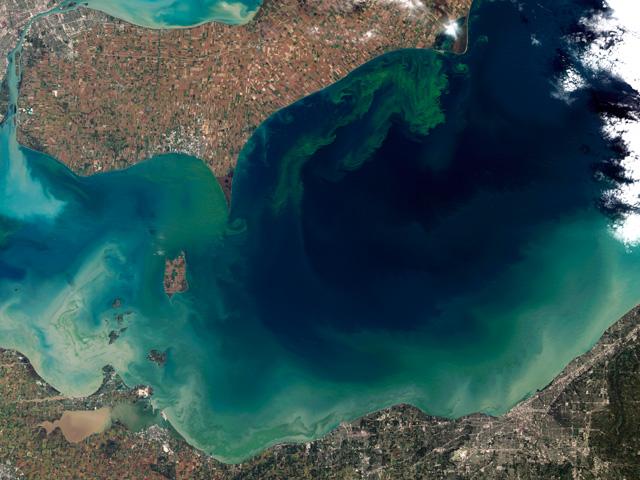Western Lake Erie Pollution Diet in Works
Ohio, EPA Reach Agreement on Reducing Nutrients Runoff Into Western Lake Erie
LINCOLN, Neb. (DTN) -- The state of Ohio will have until June 2023 to send a final plan to EPA on how to control nutrient runoff into western Lake Erie, as part of a consent decree reached by both sides in a lawsuit.
Once finalized, the plan would be completed nearly nine years after residents in Toledo, Ohio, were told by city officials to boil their drinking water for three days because of an algae bloom in Lake Erie.
The state of Ohio has taken a number of steps to attempt to curb nutrient runoff from farms and other sources in years since the bloom in 2014, including expanding voluntary conservation measures.
The Environmental Law and Policy Center sued EPA in 2019, telling the U.S. District Court for the District of Northern Ohio that the agency's approval of the state's total maximum daily load, or TMDL, in 2018 was "arbitrary and capricious" and that it violated the Administrative Procedure Act. A TMDL is essentially a pollution diet, aimed at reducing the use of nutrients in watersheds. That is expected to place a cap on phosphorous runoff.
If the consent decree is approved and finalized, the state would be required to put a draft plan up for public comment by Dec. 31, 2022, with the final plan submitted to EPA by June 30, 2023.
"EPA's obligations under the consent decree would be contingent upon Ohio's actions," according to the proposal posted to the Federal Register.
P[L1] D[0x0] M[300x250] OOP[F] ADUNIT[] T[]
"If Ohio does not submit a final TMDL by June 30, 2023, and the deadline is not extended by the court, EPA would be required to develop the TMDL within six months."
EPA currently is accepting public comments through Dec. 9 and may hold a public hearing on whether to enter into the consent decree.
"EPA or the Department of Justice may withdraw or withhold consent to the proposed consent decree if the comments received disclose facts or considerations that indicate that such consent is inappropriate, improper, inadequate, or inconsistent with the requirements of the Clean Water Act or Administrative Procedure Act," according to the posting to the Federal Register.
On Feb. 13, 2020, Ohio initiated a public comment period on its draft 2020 list of impaired waters. At that time the state announced it was making western Lake Erie a high priority for TMDL development and that the state would develop a TMDL within the following two to three years.
In August 2014, Toledo residents were warned not to drink water during a three-day period due to the algae bloom. Questions were raised about the cause of the bloom in Lake Erie, and the finger was pointed at nutrient runoff from farms as a culprit.
In February 2019, Toledo voters approved a so-called Lake Erie "bill of rights" that empowered Toledo citizens to file lawsuits on behalf of the lake, potentially threatening farmers who operate in states bordering the lake, as well as in Canada.
A month after the Toledo vote, Mark Drewes, a farmer from Custer, Ohio, filed a federal lawsuit alleging the measure violates his constitutional rights. A federal judge found the measure to be unconstitutional.
In 2019, Republican Gov. Mike DeWine unveiled the voluntary "H2Ohio" initiative to invest in a number of steps to address phosphorous runoff.
In 2021, the state added 10 counties to the H2Ohio program raising the total number of counties in the program to 24.
Read more on DTN:
"Group Wants Lake Erie on Pollution Diet," https://www.dtnpf.com/…
"Ohio Plan Targets Phosphorous Runoff," https://www.dtnpf.com/…
Todd Neeley can be reached at todd.neeley@dtn.com
Follow him on Twitter @DTNeeley
(c) Copyright 2022 DTN, LLC. All rights reserved.




